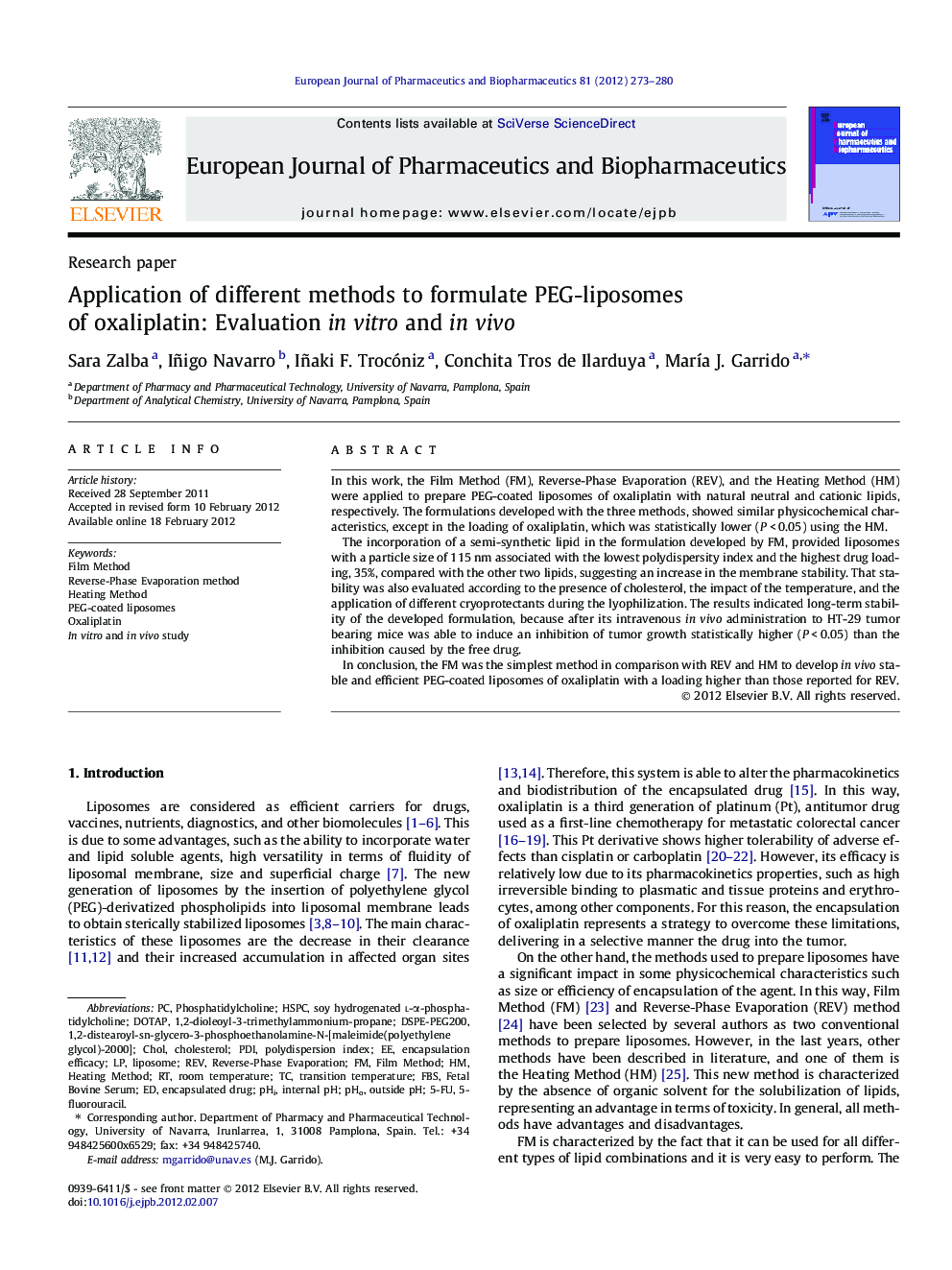| Article ID | Journal | Published Year | Pages | File Type |
|---|---|---|---|---|
| 2085325 | European Journal of Pharmaceutics and Biopharmaceutics | 2012 | 8 Pages |
In this work, the Film Method (FM), Reverse-Phase Evaporation (REV), and the Heating Method (HM) were applied to prepare PEG-coated liposomes of oxaliplatin with natural neutral and cationic lipids, respectively. The formulations developed with the three methods, showed similar physicochemical characteristics, except in the loading of oxaliplatin, which was statistically lower (P < 0.05) using the HM.The incorporation of a semi-synthetic lipid in the formulation developed by FM, provided liposomes with a particle size of 115 nm associated with the lowest polydispersity index and the highest drug loading, 35%, compared with the other two lipids, suggesting an increase in the membrane stability. That stability was also evaluated according to the presence of cholesterol, the impact of the temperature, and the application of different cryoprotectants during the lyophilization. The results indicated long-term stability of the developed formulation, because after its intravenous in vivo administration to HT-29 tumor bearing mice was able to induce an inhibition of tumor growth statistically higher (P < 0.05) than the inhibition caused by the free drug.In conclusion, the FM was the simplest method in comparison with REV and HM to develop in vivo stable and efficient PEG-coated liposomes of oxaliplatin with a loading higher than those reported for REV.
Graphical abstractThe Film method provides a simpler methodology to develop PEG-liposomes of oxaliplatin with adequate physico-chemical characteristics to reach a significant efficacy in HT-29 tumor bearing-mice.Figure optionsDownload full-size imageDownload high-quality image (100 K)Download as PowerPoint slide
